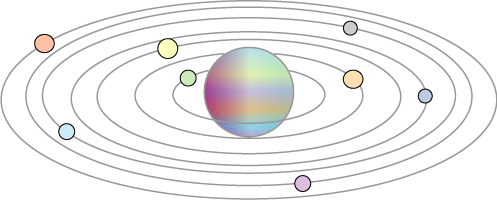Copyright © University of Cambridge. All rights reserved.
'The Moons of Vuvv' printed from https://nrich.maths.org/
Show menu
Why do this problem?
This problem offers opportunities for pupils to reinforce their understanding of factors and multiples, and, in a simple example, see an illustration of 'lowest common multiple'. It would fit in well when revising multiplication tables or working on multiples and factors.
Possible approach
You could start on this problem with a whole class activity counting in, for example, $2$s and $5$s. When do you say the same number in both? Try also two numbers which have a common factor, for example, $4$s and $6$s. When do you say the same number first in both?
After this you could introduce the problem either verbally, as a printed sheet or on an interactive whiteboard. Once the children have understood what they are to do, they could work on it in pairs. Some children might benefit from using a calculator for this activity both for multiplying by $7$, and for checking results. You may wish to stop the class part way through to share some of the
different ways they are working and recording. Some may be drawing pictures, others may be listing numbers. You could talk about the benefits of the different ways and it may be that some children adopt other representations following this sharing process.
A discussion of methods and comparison of answers in a plenary may well bring up different results. This would be a good opportunity to discuss the meaning of lowest common multiple.
Key questions
How many years does it take for these two moons to coincide?
Do these two moons coincide sooner than that?